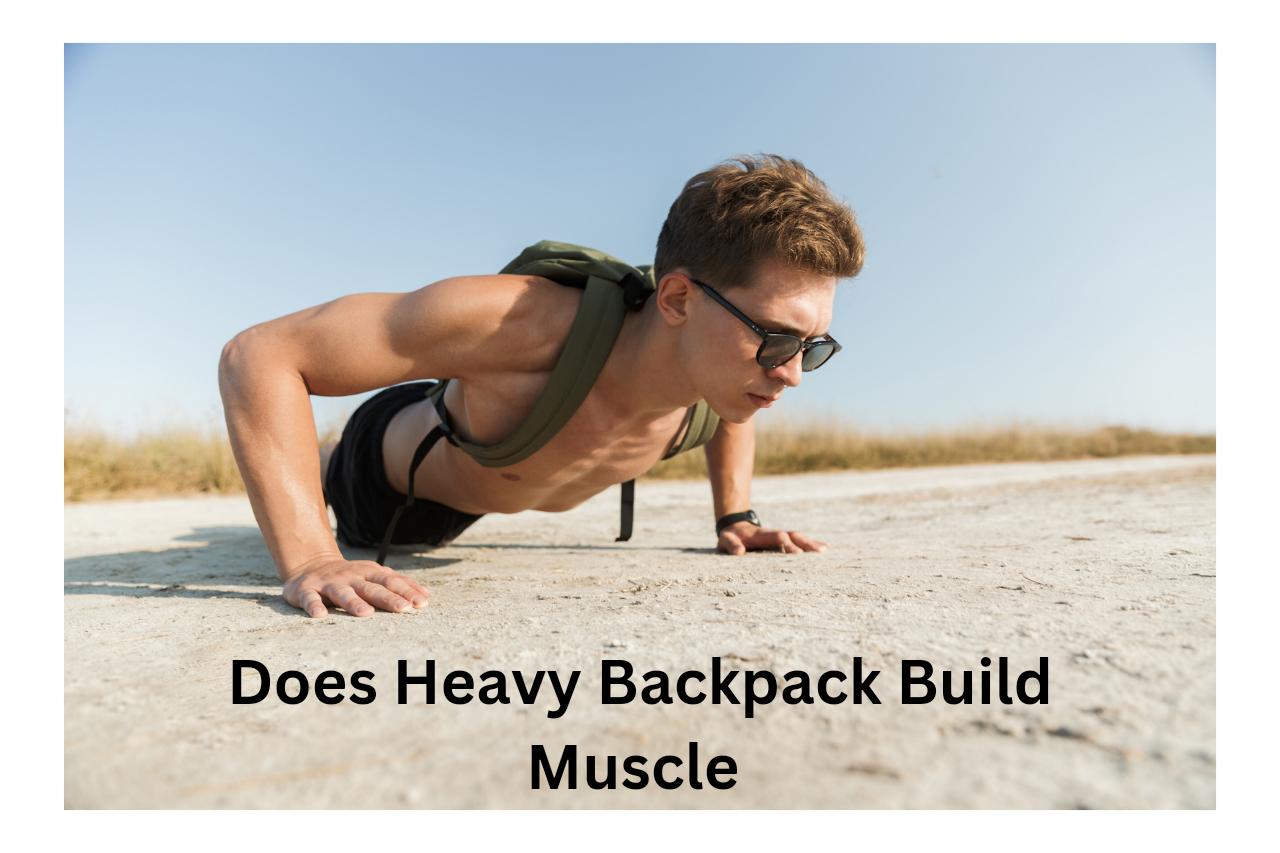In a world where fitness enthusiasts are constantly seeking innovative ways to build muscle and stay fit, one question often goes overlooked: “Does carrying a heavy backpack build muscle?” Let’s dive into this intriguing topic and uncover the surprising truth.
The Mechanics of Muscle Building
Muscle growth is typically stimulated by resistance training. Carrying a heavy backpack adds an element of resistance to your daily activities, which can engage various muscle groups, especially in your back, shoulders, and core.
Does Realy Carrying a Heavy Backpack Build Muscle?
Yes, carrying a heavy backpack can help you build muscles in your back, shoulders, and core if you do it correctly as part of your exercise routine.
Scientific Insights: Does Carrying a Heavy Backpack Build Muscle?
While there isn’t an abundance of scientific studies specifically focused on the topic of “Does carrying a heavy backpack build muscle?” as a standalone concept, there is research related to resistance training, load carriage, and muscle engagement that can shed light on this subject indirectly. Here are some key findings from relevant studies:
- Resistance Training Principles: Studies in resistance training have consistently shown that adding external resistance, such as weights or backpacks, can stimulate muscle growth. Resistance training is a well-established method for muscle hypertrophy (muscle growth) and strength gains.
- Load Carriage and Muscle Engagement: Research into load carriage, often conducted with military personnel or hikers, has highlighted that carrying a heavy load can engage various muscle groups, including the back, shoulders, and core. This suggests that carrying a heavy backpack may indeed contribute to muscle activation.
- Specific Exercises: While not directly related to backpacks, studies on exercises like farmer’s walks (carrying heavy objects in each hand) and weighted vests have shown positive effects on muscle development, particularly in the upper body and core.
- Proper Form Matters: Research emphasizes the importance of maintaining proper form and technique when carrying heavy loads. Correct posture and distribution of weight across the body are essential to prevent injuries and maximize muscle engagement.
- Progressive Overload: The principle of progressive overload, a fundamental concept in resistance training, suggests that for muscle growth to occur, the resistance or load should gradually increase over time. Carrying a progressively heavier backpack could align with this principle.
While these studies provide insights into the potential muscle-building effects of carrying a heavy backpack, it’s essential to consider safety, individual fitness levels, and proper technique.
Related: What Happens If Your Luggage Is Overweight – How To Deal With This Situation
The Benefits of Carrying a Heavy Backpack for Muscle Growth
Carrying a heavy backpack can indeed be beneficial for muscle growth. In this comprehensive guide, we’ll delve into the reasons why this form of resistance training can help you build a stronger and more defined physique.
Resistance Training with a Backpack
1. Engaging Multiple Muscle Groups
When you carry a heavy backpack, your body has to work harder to maintain balance and support the added weight. This engages various muscle groups, including:
- Back Muscles: The muscles in your upper and lower back work to support the load and maintain posture.
- Shoulder Muscles: Carrying a heavy backpack on your shoulders activates the deltoid muscles.
- Core Muscles: Your core muscles stabilize your spine and help you stay upright.
2. Progressive Overload Principle
Muscle growth occurs when you subject your muscles to progressively increasing levels of resistance. Carrying a heavier backpack over time aligns with the progressive overload principle, which is essential for muscle development.
3. Functional Strength
Unlike some gym equipment that isolates specific muscles, backpack training mimics real-world scenarios where you might need to carry heavy objects. This functional strength can have practical applications in daily life.
Safety and Proper Form
1. Avoiding Injury
While carrying a heavy backpack can be beneficial, it’s essential to prioritize safety. Incorrect form or excessive weight can lead to injuries. Always respect the weight limits of your backpack and listen to your body.
2. Proper Backpack Fit
Ensure your backpack is properly fitted with padded straps and proper support. This minimizes the risk of discomfort or injury during your workouts.
Incorporating Backpack Workouts into Your Routine
1. Exercises to Try
Consider these exercises to incorporate a heavy backpack into your routine:
- Walking Lunges: Add weight with the backpack while performing lunges for added leg and core engagement.
- Push-Ups: Elevate your feet and place your hands on the backpack to intensify push-up workouts.
- Squats: Hold the backpack in front of you or on your shoulders while performing squats for increased resistance.
2. Varying Intensity and Duration
To keep your muscles challenged, vary the intensity and duration of your backpack workouts. Gradually increase the weight and try different exercises to prevent plateaus.
READ NEXT: Best Hiking Backpacks For 2023
Conclusion: The Muscle-Building Potential of Backpack Training
In conclusion, carrying a heavy backpack can be a practical and effective way to build muscle. By engaging multiple muscle groups, adhering to the progressive overload principle, and ensuring safety and proper form, you can harness the muscle-building potential of this accessible form of resistance training. Remember to start with a suitable weight, maintain consistency, and consult a fitness professional if you have any concerns or questions about incorporating backpack workouts into your routine.

